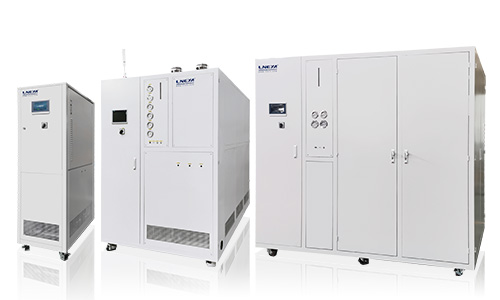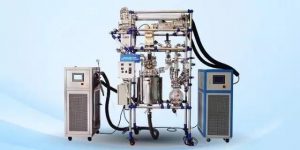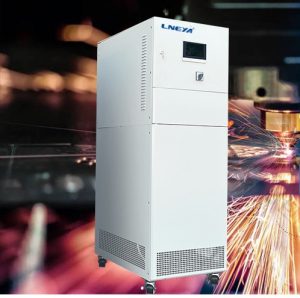Analysis of the work and industry application of the chiller
Although there are many different types of chillers, most use the same cooling principle. An important part of the process is the coolant or refrigerant, which holds more heat than water and helps maintain an efficient cooling process. Heat is removed from the coolant and released into the air. The concept of a cooler is based on the principle that cooling involves removing heat from a process and releasing it into the air.

All chillers have condensers, compressors, expansion valves and evaporators for circulating fluid or refrigerant. The process of the cooler is designed to convert the refrigerant from liquid to vapor and then back to liquid. The refrigerant removes the heat from the process in the form of vapor. When it returns to liquid state through the compressor and condenser, it circulates through the system to capture heat from the process or operation.
On a manufacturing floor, when equipment is fully operational, temperatures can rise rapidly, creating an unsuitable work environment. To keep employees safe, industrial operations use coolers to keep working conditions at the right temperature. By adding an air handler, the chiller can cool the work area with cool air, just like an air conditioner. Depending on the building, air-cooled chillers can be installed on top of the building or inside.
Pharmaceutical:
Pharmaceuticals use chilled water in the manufacturing process and require precise temperature control. Chillers have the accuracy and precision of a chilled process and can be central process chillers or compact process chillers. The four basic types of pharmaceutical chillers are reciprocating, screw driven, centrifugal and absorption.
industry:
Industrial operations generate heat through the use of friction, high-power equipment, and furnaces or ovens. To extend the life of heavy equipment, chillers circulate cooling liquid through the equipment to maintain efficiency and productivity.
Refrigeratori raffreddati ad acqua:
Water-cooled chillers are often combined with cooling towers and use a condenser water treatment system to remove mineral deposits. The cooling tower sends water to the chiller for cooling.
Refrigeratori raffreddati ad aria:
Air-cooled chillers are used where discharge is not an issue. It absorbs heat from the water and transfers it to the air: first, the heat of the circulating chilled water is absorbed in the evaporator, then the refrigerant condenses in the condenser and releases the heat into the air.
Low temperature chiller:
Low temperature chillers are suitable for industries that operate below freezing and require chillers capable of producing – 40° F (-40° C) temperatures. They are used in ice rinks, petrochemical cooling, chemical extraction, medical, pharmaceutical and food processing industries, as well as in product testing laboratories.
Raccomandazioni correlate
-
Measures for stable operation of short-range molecular distiller
868If the short-range molecular distiller is inefficient during operation, it will affect the use of the associated refrigeration heating temperature control system. How does the short-range molecular distiller maintain stable operation? If the steam...
Visualizza i dettagli -
Thermal oil heating system installation and fault analysis
1267When the heat transfer oil heating system device is installed, it is necessary to pay attention to the system to avoid some faults during installation. If a fault occurs, it is necessary to understand the faults related to the heat transfer oil he...
Visualizza i dettagli -
Leakage Detection Tips of Low Temperature Freezer
1139Pressure leaking detectionIt is an effective way to check and find out the leakage point. The leakage detecting pressure of refrigerating system of freezer is relevant to the type of refrigerating fluid and cooling and the location of tube. The le...
Visualizza i dettagli -
Utilizzo dei sistemi di riscaldamento a olio termico nell'industria farmaceutica
773I requisiti di temperatura di riscaldamento nell'industria farmaceutica sono molto vari, poiché i diversi processi farmaceutici e le fasi di preparazione dei prodotti hanno requisiti di temperatura diversi. Di seguito sono riportate alcune delle temperature di riscalda...
Visualizza i dettagli
 Refrigeratori industriali LNEYA Produttore Fornitore
Refrigeratori industriali LNEYA Produttore Fornitore












